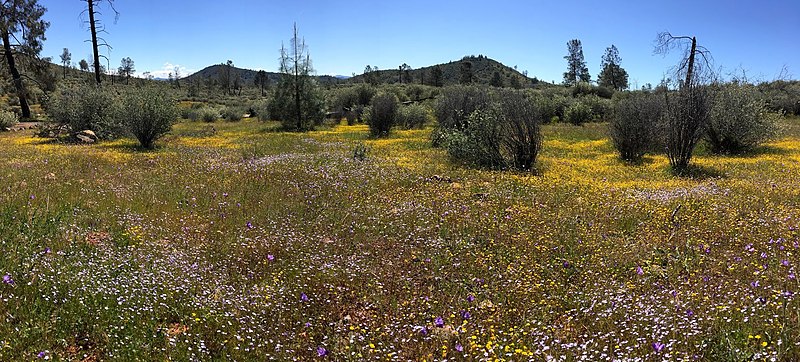| DescriptionRed Hills (42598108362).jpg |
The Red Hills is a region of 7,100 acres of public land located near the intersection of State Highways 49 and 120, just south of the historic town of Chinese Camp in Tuolumne County. The Red Hills are noticeably different from the surrounding countryside. The serpentine-based soils in the area support a unique assemblage of plant species. Included among the thorny buckbrush and foothill pine is a rich variety of annual wildflowers, which put on a showy display every spring.
In the Red Hills buckbrush and other shrubs provide browse and seeds for small populations of mammals, including mule deer, jackrabbits and rodents. Coyotes, bobcats and fox can also be found in the Red Hills. Approximately 88 bird species have been observed in the Red Hills. Some common species include mourning dove, acorn woodpecker, ash-throated flycatcher, scrub jay, wrentit, plain titmouse, bushtit, Bewick's wren and house finch. Valley quail and mourning doves are the major game birds in the Red Hills. An abundant insect population supports insectivorous birds including western kingbirds, ash- throated flycatcher, tree swallows, barn swallows, black phoebes and others. Raptors include the red-tailed hawk, Cooper's hawk, prairie falcon and great horned owl. Fish-eating birds seen in the Red Hills include the belted kingfisher and great blue heron. Roadrunners can also be found.
Four sensitive species of animals are known from the Red Hills. Wintering bald eagles roost along the shores of Don Pedro Reservoir and have been observed where Six Bit Gulch enters the lake. As many as 20 bald eagles have been sighted during the winter on the shores of Don Pedro Reservoir, roosting in stands of foothill pines.
Photo by Patrick Congdon, BLM volunteer. |

